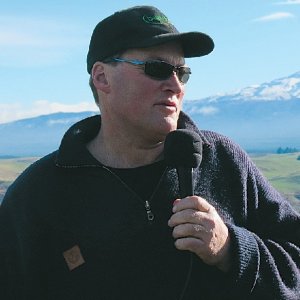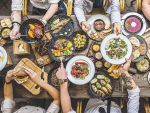It’s also a gateway to the carrot growing capital of New Zealand – Ohakune, about 30km to the east, which is where Waiouru Station owners Ron and Fran Frew hail from.
The Frew’s 670ha, about half the original station area, is flat to gentle rolling country with pumice soil. The ground makes cropping relatively easy and integrating barley and brassica with pasture supports a stocking rate of 16SU/ha, where pasture only would be pushed at 12SU/ha.
Having improved subdivision, they now run 4200 mixed aged ewes, 2200 hoggets, 100 R2 steers, 100 weaners, and 94 dairy grazers, despite two months of nil grass growth in winter.
“We simply wouldn’t be able to carry these stock numbers without those winter feed crops,” says Frew. “It’s always been done here and is must for this area.”
Winter feed crops of swede and kale cover 25ha combined, 25ha goes into grain, and 10ha/year is leased to the family business to grow potatoes.
“I do the feed barley because we are doing the swedes and we’ve already got the paddocks broken in. A cash crop like barley doesn’t tie up paddocks at a critical time of the year.
“Kale follows swedes because you can’t grow then in the same place year after year. The whole programme is integrated.”
The feed grain is another source of income, as are dairy grazers and hay, he adds.
“So instead of being just sheep and beef I have five sources of income.”
Sheep and cattle are on crop during the coldest months: July, August and into September when pasture is “locked up” to grow grass for lambing early October.
Frew’s commercial vegetable growing background kicks in to produce consistently high yielding fodder crops. Crops mean ewes are always in good condition which helps combat the climate, and means they have no trouble fattening lambs. But even then, and with shelter belts, snow can be a real killer on the station.
“Two years ago I lost 1000 lambs in three days. We did 100% lambing that year. You can scan 170% but the docking percentage will be totally dependent on the weather.” Current average is 130%.

















